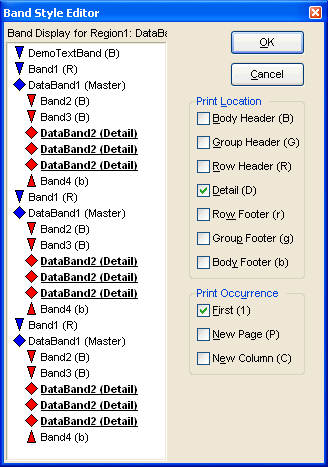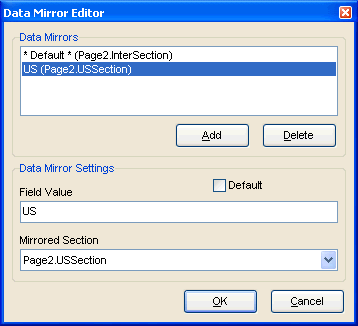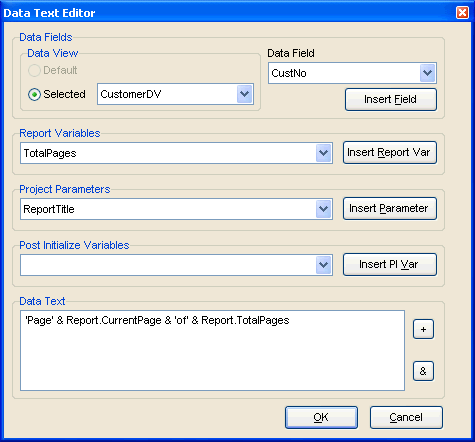Reporting Components

Region - This component acts as a container for Band and DataBand components. To create a composite or sub-report, simply drop more than one region on a page and add the appropriate bands to each.

Band - This component is primarily used to create header and footer bands in a banded style report. A Band component can only be created within a region and it's purpose is controlled through the Band Style Editor shown below. The Band Style Editor displays a virtual layout of all of your bands for the given print locations of each band or data band. Note that you can create as many Bands as you like and a Band may print in multiple locations if the report design requires it. So for example, if you want a solid horizontal line to appear above and below a detail body, you could create a single band and set it to print on both the Body Header and Body Footer. You can also control the Print Occurrence for a Band, having it continue on a new page or column or any combination of occurrence settings. You can set a Band to group on specific fields and can create as many different types of group headers or footers as your report requires. Basically, with Rave's Band and DataBand components, you'll be able to create just about any banded style layout that you can imagine.
DataBand - The DataBand component is fairly similar to a band component except that it is tied to a particular DataView and iterates across the rows in the DataView. You can link DataBands together for Master-Detail to unlimited levels or multiple details on the same level. Some advanced features that are supported by a DataBand include KeepBodyTogether, KeepRowTogther, StartNewPage, MaxRows and Orphan/Widow control.
DataText - The DataText component is the primary means to output fields from your database. You can quickly select a specific DataView and DataField with Property Panel or use the Data Text Editor shown below to create any combination of string constants, data fields, report variables or project parameters. The & concatenation operator is the same as the + operator, except that it also inserts a space. Report Variables are items such as total pages or current date and time in a variety of formats. Project Parameters are custom variables that you create and initialize from your Delphi application. Project Parameters can be used for items such as user defined report titles, printing the current user name or other custom information.
DataMemo - This component is very similar to the Memo component except that it retrieves data from a DataField. DataMemo component's print text data out in a word wrapped fashion and the DataField can be any text type, not just memo fields. It also has RTF and mail merge support.
CalcText - This component is used to perform simple operations such as Sum, Average, Count, Min and Max on a data field. You can set the value as a running total and place it in any type of band or anywhere on the page) you need it.
DataMirrorSection - The data mirror section component is similar to Rave's section component (found in the Standard Toolbar) with one major difference, it will dynamically mirror another section depending upon the value of a DataField. You configure the data mirror section using the Data Mirror Editor (shown below). This component is very useful for printing out data that has different formats depending upon the type of data. One example is an address field that could print a US format if the country field is "US" and an international format otherwise (using the Default option in the Data Mirror Editor). You could also print Boolean field values with your own custom bitmaps.

